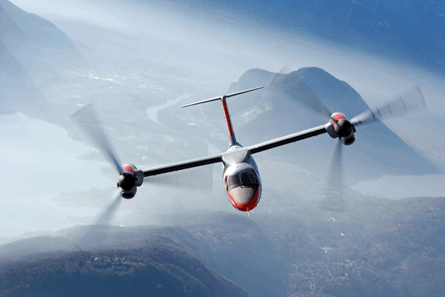AgustaWestland has unveiled a new facility in Arlington, Texas, to house the first prototype of the freshly renamed AW609 civil tiltrotor as it prepares for airworthiness certification tests to start within a year.
The unveiling allowed the Anglo-Italian helicopter maker and Finmeccanica subsidiary to assert its authority over the programme's future, three months after Bell Helicopter accepted a demotion from being a full partner to a parts supplier.
"We are now in full control," Bruno Spagnolini, chief executive of AgustaWestland, told reporters at the company's annual press conference on the eve of the HELI-EXPO convention.
 |
|---|
| © AgustaWestland |
Bell and AgustaWestland had worked for more than a decade as partners to design and start testing the former BA609, but the US airframer's interest in the project began to wane a few years ago.
AgustaWestland, however, considers the civil tiltrotor a strategic priority. The company is already working on a second generation design under development funding awarded by the EU.
But, first, AgustaWestland is still focused on making the AW609 a successful product, despite several years of delay that have raised concerns about unit costs. A decade ago, Bell promised to deliver an 11-seat civil tiltrotor, including two crew seats, for $10 million a copy.
AgustaWestland will not provide updated unit cost estimates.
But company officials have adopted a new market strategy. The AW609 has been re-aimed at the high-end oil and gas market for vertical-lift aircraft. Bell's strategy had been focused on the broader transport market, where the tiltrotor would compete against similarly sized, fixed-wing turboprops costing $5 million.
AgustaWestland claims the AW609, which cruises at 275kt (509km/h), has attracted more than 80 purchase commitments, with customers who value vertical lift and speed.
To enter service on schedule in the first half of 2016, however, the AW609 must become the first tiltrotor to receive a civil airworthiness certification.
AgustaWestland is building the third and fourth AW609 prototypes in Italy, but chose to base certification testing in Texas. The US Federal Aviation Administration has been working on the previous Bell/Agusta joint venture for several years, developing experience with the tiltrotor's unique certification requirements.
In April, AgustaWestland expects the FAA and the European Aviation Safety Administration (EASA) to issue the first package of airworthiness requirements aimed at the autorotation capability of the tiltrotor.
Source: Flight International























